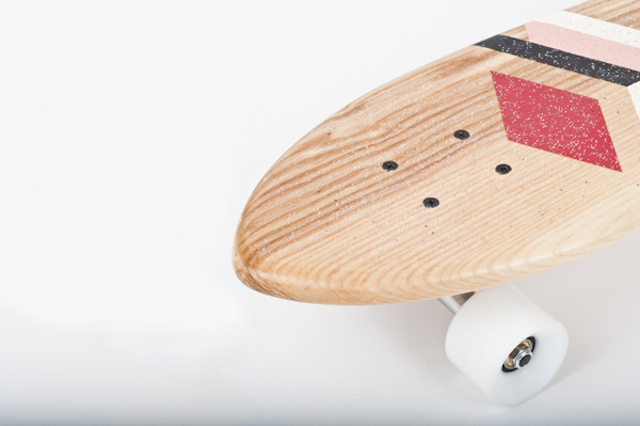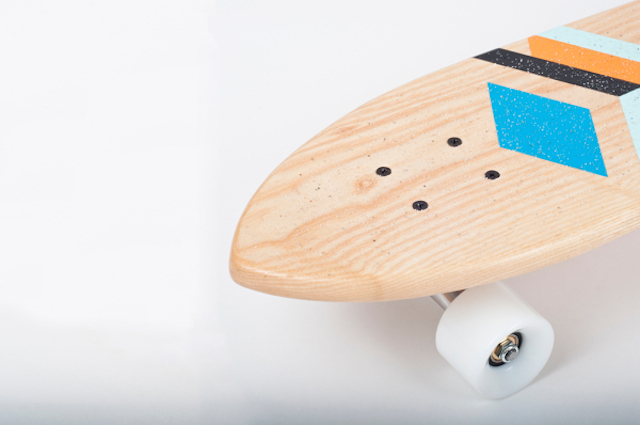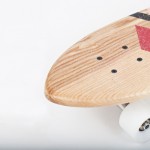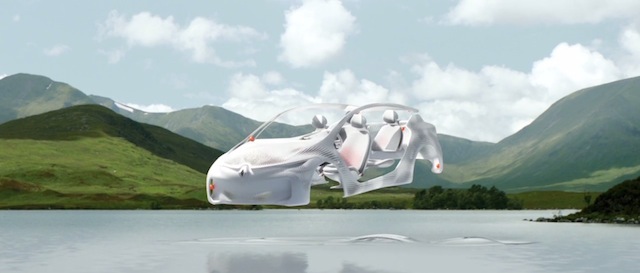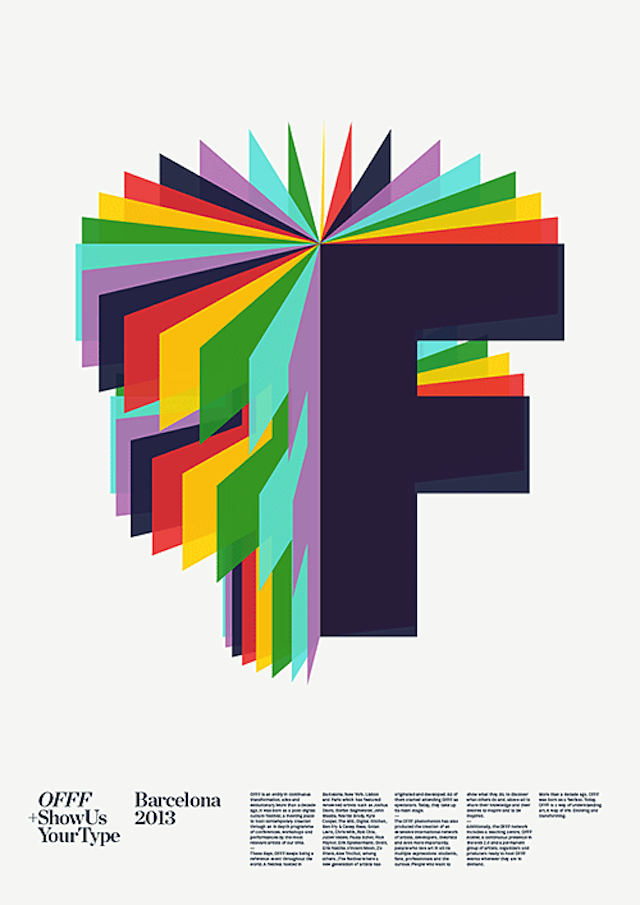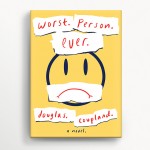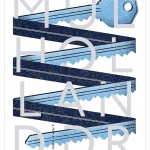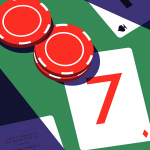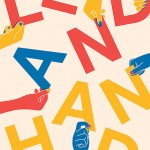Myth Skateboards Collection
Posted in: UncategorizedFocus sur la collection Myth conçue par le studio français Say What composé de Benoit Berger et Nathalie Kapagiannidi. Avec la marque italienne Atypical, ils ont imaginé 3 boards inspirées de 3 dieux de la mythologie grecque : Gaïa (déesse de la Terre pour le modèle tricolore), Héphaïstos (dieu du feu pour le modèle rouge) et Poséidon (dieu des mers pour le modèle turquoise). De beaux motifs géométriques réalisés à la main sur des planches en bois plates, disponibles en ligne.
Making Of :
Trinity Mirror ditches Nasa, admitting 'we'd run out of space jokes'
Posted in: UncategorizedTrinity Mirror has dropped its National Advertising Sales Agency (Nasa) branding for its national and regional sales in favour of Trinity Mirror Solutions, as part of a wider restructure.
Will 'recording' our thoughts as data make us immortal?
Posted in: UncategorizedDino Burbidge, director of technology and innovation at WCRS, probes into whether our thoughts and feelings can be stored as data – imprinting the sound of your child’s first laugh or the taste of that amazing piña colada you had in Puerto Rico in 1998. Will data make us immortal?
Amazon tries to ignite Fire with TV ad
Posted in: UncategorizedAmazon is backing the launch of the Fire mobile phone with a TV campaign, as part of the expansion of its above-the-line activity.
A history of the Coke vs Pepsi war in 3 1/2 minutes
Posted in: UncategorizedWhen PepsiCo unveiled the stevia-based Pepsi True last week, the unofficial ceasefire between Coca-Cola and Pepsi came to a dramatic end and one of marketing’s biggest rivalries sparked back to life.
Harmony’s Spot – Fall/Winter 14
Posted in: UncategorizedRéalisé par Julien Soulier & Adrien Landre de chez Partizan, la marque de prêt-à-porter Harmony vient de sortir son spot pour présenter sa collection Automne/Hiver 2014. Sur une musique d’Odesza – « iPlayYouListen », les chorégraphes Mia Hjelte et Daniel Norgren-Jensen dansent gracieusement en changeant de vêtements à chaque raccord. Une belle manière de rendre compte d’une collection, en danse et en musique.
DHL under fire for 'using' F1 Bianchi crash for 'likes'
Posted in: UncategorizedDHL is being criticised on social media for appearing to take advantage of Formula 1 driver Jules Bianchi’s horrifying crash at the Japanese Grand Prix.
HP plans to 'split into two companies'
Posted in: UncategorizedHP has reportedly returned to a breakup plan that would mean spinning off its PC and printer division into a separate company.
Snickers features Mr Bean in latest phase of 'you're not you when you're hungry' campaign
Posted in: UncategorizedMars has signed comedy character Mr Bean as the face of its latest “you’re not you when you’re hungry” ad for Snickers.
Eric X. Li
Posted in: UncategorizedWill China supplant the United States?
by
From Adbusters #116: Blueprint for a New World, Part 5: Politico

Ai Weiwei
The United States has long been the anchor of a global architecture built after World War II and solidified during the post–Cold War period.
This global architecture is organized around a dichotomous narrative that has dominated international relations for more than half a century. It is a single fault line narrative where ideology demarcates the opposing sides.
Two phases defined this era of international relations. The first was the post–WWII phase during which two universal ideologies were engaged in an existential struggle around the globe: Soviet communism vs. democratic liberalism. Both were brands of historical determinism that claimed the inevitability of a preconceived destination for all mankind. Both armed themselves to the teeth and drove their visions from continent to continent. In the end, the Soviet Union collapsed and the American–led West lived — hence the American century.
The second phase occurred during the post–Cold War period. Winning the Cold War led the West to embrace, in the traditions of Hegel and, ironically, Marx, an inexorable linearity to history. The United States would lead the victorious Western alliance in implementing the utopia of democratic liberalism on every corner of the Earth. Electoral democracy and market capitalism were to be the building blocks of a new world order. Six billion rational individuals would all make the right choices in the voting booth and the marketplace and eventually unify the world under a single set of political, economic and even moral rules. Here, the single fault line is between the democratizers and market openers on one side and those who resist conversion or are yet to be converted on the other.
A web of international alliances and organizations were constructed under American leadership using this ideological framework. As a result, a narrative of dichotomy was — and continues to be — present and decisive in just about every sphere of American international endeavors, whether they be political, social, economic or military in nature. In this context, almost all international — and most domestic — conflicts are framed as struggles between good and evil, or at least between progressive and regressive forces: democracy fights dictatorship, human rights against tyranny, free markets vs. protectionism. The Western alliance is, of course, on the right side of history. Realpolitik, if any is applied within this political matrix, is in tactical support of this brand of historic determinism. In the past quarter century, the United States has expended vast amounts of treasure, intellectual resources, moral capital and a great number of lives in pursuit of what it sees as universal values on alien soils.
Thomas Hobbes’ seminal work, Leviathan, best describes the essence of this American–led post–Cold War international order. When individual players realize that the survival of the fittest is proving destructive to all, they collectively decide to cede their freedom to a Leviathan, who will act as the guarantor of order and enforcer of rules of engagement. Leviathan’s judgments are to be obeyed by all. After the collapse of the Soviet Union, America took on the role of Leviathan in pursuit of a grand vision of a universalized world order. In the decades since that collapse, the United States has played this role, issuing security guarantees to a large number of nations, patrolling the world’s sea lanes, underwriting the international trading and financial systems, punishing those whom it judges to be rogue players — sometimes even at the expense of breaking the rules it is supposed to uphold — as in the 2003 Iraq War.
There is only one problem. The American Leviathan is rapidly becoming a mirage. It is being sustained at the expense of the American nation. A Leviathan is by definition a disinterested ruler and a god who is above the world it rules — not a participant in it. America, with 300 million people, is a nation state that is and always will be an interested party in the world. Its attempt to play the dual role of ruler and participant is now costing America dearly and could very well bankrupt the country, economically and socially, if it continues. After just one generation, it has fallen deeply in debt. Its middle class is crumbling. Its industries have been hollowed out. Its infrastructure is in disrepair. Its education system is badly underfunded. Its social contract is in shambles and its political governance is paralyzed. For a brief period since the Cold War’s end, America was able to be both a Leviathan who rules the system and a national player within the system because a case could be made that its national interests coincided with the world’s interests. But that moment has passed. We are living at the end of it. The world is now in transition.
The old global architecture is not sustainable because its underlying dichotomy no longer reflects the realities of our world. Two developments have occurred to shift the twentieth–century paradigm: the primary conflicts of our time are defined by multiple fault lines, not a single fault line and the reemergence of China as a great power has fundamentally altered the cost structure of maintaining the global architecture. Many ask whether China will supplant the United States and become the super power that underpins international relations. Some go so far as to proclaim that the twenty–first century will be a Chinese century.
China does appear to be America’s natural successor in this post–ideological century, but China has, and always will, act in its own best national interests. Its worldview is consistent with the cultural roots of the Middle Kingdom — keeping out barbarians, not invading them. This outlook of centrality is directly opposite to twentieth–century Soviet and American notions of universality. With or without sufficient capacity, China will never seek to lead the current global system let alone invent and pay for a new one to run the world.
Indeed, China currently deals with the world with a fundamentally opposite worldview to that of the United States. What many see (misguidedly) as straightforward realpolitik in China’s international projects actually reflects a deep–seated Chinese belief that the primacy of culture, as opposed to ideology, now directs the organizing forces that shape international affairs. It is cultural pragmatism that drives China’s domestic development and emanates from all aspects of its foreign policy. In such a cultural framework, states do not act according to single fault–line ideological alignments. The world is an arena in which nations and groups compete, cooperate with, and counter–balance each other. Globalization is not a project to drive all nations toward a preconceived and unified end, but a process through which this multifaceted, multi–layered dynamic takes place.
So we live in uncertain times. The world is not coming together under a unified system. Its underlying narrative is dead. Its underwriter is no longer able to pay for it. The most significant rising power is not interested in developing a new unifying system or narrative. Perhaps “warring states” is the proper global metaphor of our time.
Renault Eolab Concept
Posted in: UncategorizedAfin de présenter le nouveau concept Renault Eolab, UFO et Sébastien Cannone ont mis en scène un spot frais et innovant. La voiture immerge de l’eau, ce qui explique sa caractéristique hybride thermique-éléctrique. Une voiture qui consommerait très peu (1L/100km), et qui recèlerait une centaine d’innovations techniques. À découvrir en vidéo.
M&S banks on external brands for Baby range launch
Posted in: UncategorizedMarks and Spencer has launched the M&S Baby brand, extending its childcare range to newborns and very young children.
Advertising Week: What have we learned?
Posted in: UncategorizedNEW YORK – As the dust settles on Advertising Week, creativity versus data emerges as a dominant theme.
Matt Chase Illustrations
Posted in: UncategorizedL’illustrateur et designer Matt Chase travaille en freelance à la fois pour des magazines tels que Wired UK, des festivals comme le OFF et des maisons d’édition pour imaginer des couvertures. Il conçoit des illustrations minimalistes qui jouent avec les formes et la typographie dans un style original. Un panorama de son travail est disponible en images.
The Oculist.
Posters.
Slow Travel.
Cinema, Re-Imagined.
A Stockholm Interlude.
Mulholland Drive.
Money Magazine.
Worst. Person. Ever.
Type & Lettering.
Ampere.
Happily Ever After.
MIT Technology Review.
New York Times Upshot.
New York Times OP-ED.
The Bluths.
To Resolve.
Wired UK.
Summer.
Pinterest Pushing New Editorial Product With First Co-Marketing Campaign
Posted in: UncategorizedPinterest is rolling out its first co-marketing campaign on Monday to promote a new editorial product called Pin Picks. The social scrapbooking service has partnered with roughly 10 media companies, including eHow and Funny or Die, as well as YouTube star Michelle Phan.
Pin Picks are topic-specific collections of pins and Pinterest profiles that the company has been testing since August on its desktop and mobile sites. NFL team the Seattle Seahawks and ESPN used the product to create a program around tailgating football games. More recently, HGTV created one called “Home Hacks” to talk up DIY projects.
Now Pinterest is raising the profile of Pin Picks with a four-week campaign tied to Halloween. The company’s head of brand, David Rubin, said it chose Halloween for the campaign because “Halloween is one of the more important times in Pinterest’s year.” He said the service counts more than 176 million Halloween-related pins.
N.B.A. Is Said to Continue Network Deals
Posted in: UncategorizedThe league is expected to announce new media deals with ESPN and Turner Sports on Monday that will nearly triple the annual average rights fees of the current contract.![]()
Facebook’s Bus Drivers Seek Union
Posted in: UncategorizedSome of the drivers who work for a shuttle bus contractor and put in 15-hour split shifts taking Facebook employees to and from work are seeking representation by the Teamsters.![]()






